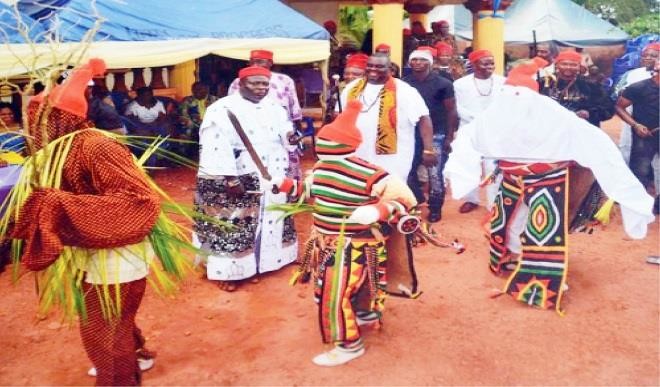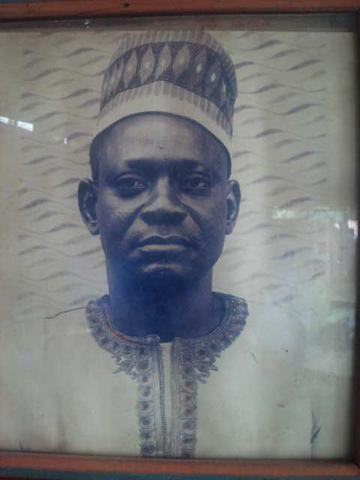
By Michael Achile Umameh
The Igala mega state attained the height of its fame during the mid-17th century.
The rise of the Igala mega state disrupted and contributed to the shift of the Trans-Atlantic slave trade from the Bight of Benin to the Bight of Biafra and the decline of the Benin Empire between the sixteenth and seventeenth centuries. The Idah-Benin war (1515-1516) was a war of mutual independence.
The Igala state reached its political and commercial supremacy afterwards, when it became a leading exporter of choral beads, horses, medicine, skills and of course, slaves to the coastal region. Its growing power, nevertheless, changed the dynamics of the earlier complex relationships with several northern Igbo communities. Joseph Hawkins in 1797 already captured the relentless raiding of the extreme northern Igboland by the Igalas. In his “A History of a Voyage to the Coast of Africa” he noted the growing conflicts between the ‘Ebo Country’ and ‘Galla’.
By the late 17th century, the Igalas conquered and held socio-economic, political and religious control of the indigenous northern Igbo mini-states. From Opi, Nsukka, Nsugbe, several Igbo communities on the Anambra river, the lower Niger, through Okpanam to Asaba the Igala held sway.
Trading out post with Onitsha and the Ijaw middlemen were fully established. The mythical Omeppa, Inenyi Ogugu set up garrison at Opi and several Igala warlords played their part in the build-up of the Igala colonial take over of these northern Igbo states. But no other individual played a greater role in shaping Igala-Igbo colonisation during the 18th century than Onoja Oboni, the legendary Igala warrior and slave trader.
Onoja Oboni’s personality and heritage has been shrouded in mythical imagery over time. Ranging from being the Son of Eri, the grandson of Aganapoje to being a descendant of one of the Idah royal families; the priestly sub-clan of Obaje-Adaka in Okete-ochai-attah.
The key areas of consensus are; he was a master strategist, slave raider and trader, conqueror, coloniser and imperialist.
Added to these were his diplomacy, expansionist traits and the acculturation of conquered territories. He built himself a walled city in Ogurugu and recent archaeological findings of the remnant of the ruins of his fort on the grounds of the University of Nsukka confirm this.
The Igala soldiers built forts and fortifications that stretched from Ete down to Opi and then to Anambra. Oboni’s rise to power affected the history of the North-western Nsukka and the Igbo communities on the Anambra River and the Lower Niger during the Igala commercial and socio-cultural ascendancy and domination.
This was the reinforcing of the golden age of Igala imperial expansion.
In this way, Igala mega state took control and allegiance were paid. Until the decline of Igala power, the Ezes of Enugu Ezike, Akpugo, Nkpologu, Ibagwa Ani and Opi continued to receive their titles from Idah; investiture, installation and confirmation of their office was only by the royal blessing of Attah Igala in Idah.
The Eze were only validated when the returned home with Igala choral beads ‘aka’, staff of office believed to be imbued with protective charms to ensure longevity and security of the Eze as well as prestige animal (horse) to bolster up their ego. There were also periodic royal visits to the Atta Igala to pay tributes and as well intended to strengthen diplomatic ties and inter-group relations, renew allegiance, and assured insurance from slave raids.
In terms of indigenous technologies, the Igala soldiers built factories (forges) for manufacturing Dane-guns, ironworks, carving, introduced arrowheads with tip-poison from sting ray; cloth knitting, terracing of Nsukka hillsides and brought in a well developed political and social hierarchies.
At this time Igala empire had become a cultural exchange hub for other merging states; the influence was felt as far north as the Nok civilisation and down east to Igbo-Ukwu civilisation. Till date many of the Igala-Nsukka borderland remain bilingual.
On the religious level, the Igala installed their own priests – the Attama- as the custodian of the dangerous ‘alusi’ shrine, took control as mediators between the spirit and the Igbo communities, presided over divinations and fashioned ‘Ikenga’, ‘Okwute’ (ritual staffs) that combined both Igala and Igbo religious elements.
The Attama thus became the major agents of Igala socio-cultural control. Several efforts to keep the Attama lineage Igala failed, eventually the priestly office have been greatly igbonized, even though the nominal Igala identification is still predominant.
Many of the northern Igbo state settlements have lineages with Igala names, cultural practices with marked Igala modification and adaptations. The use of Igala circular basket in contrast to the Igbo rectangular types persists till this day.
By the turn of the 19th century, the Igala empire was too large for any reliable and robust central control. Internal decay and implosion set in. The Fulani jihadists started contracting the Igala imperial power, conquered territories in the north switched tributes, forced or/and seceded from the Igala empire.
The Bassa war added more pressure to the war-weary empire. The abolition of slave trade brought in untold economic recession. In 1914 the British burnt down Ibagwa and Obukpa as a punitive measure. By the 1920s, Igala empire was a spent force and a limping shadow, the British easily took over control of both Nsukka and the Igala territories.


